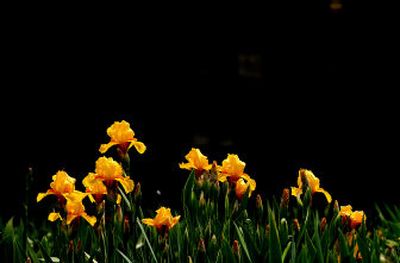Time to break up iris to ensure beautiful blooms

In early June the irises put on their annual show. Their bold flowers in nearly every color of the rainbow are the mainstays of the summer garden.
And now is the time to divide them.
Most spring and early summer blooming plants have the energy to put out flowers because they stored it up during the previous growing season. In the case of the iris, that is the period between the end of their bloom cycle and now when they begin to go dormant in the summer heat. If they had been dug any earlier, next year’s flowers would have been sparse.
Digging and dividing a clump of bearded iris isn’t difficult and the plants are very forgiving, if a few basics are adhered to.
Dig it
Start by digging around the outside of the entire clump with a digging fork or shovel. Stay a few inches away from the plant and just gently work the mass of roots loose. Once dug, wash all the dirt off the tangle. What you will have is a mass of both old and new roots. Begin pulling the roots apart gently being careful to leave a large healthy clump of leaves with each fan or hand of rhizomes. Discard the shriveled and pock-marked old roots as these have done their job. Trim the leaves back by half their length. You will end up with a good-sized pile of roots – probably more than you want but that’s what garden friends are for.
Plant it
To replant the rhizomes, choose an area with well drained soil. Iris like it on the dry side so here’s your chance to fill in that drier corner of the garden. Dig a wide, shallow hole not much deeper than the thickness of the rhizomes. Iris can handle almost any soil so it is not necessary to amend the soil. Replant the largest hands of the divided root. Spread the roots out in the hole and then cover the rhizomes so that the top of the roots are exposed to the air. Planting irises too deep is the fastest way to kill them. Water well and then put them on a regular watering schedule through the end of the growing season. In the early spring apply a little organic, slow release fertilizer. Don’t expect a huge showing of flowers the first year after being divided. The plants are building roots to feed the flowers later.
Dutch and the miniature reticulata iris grow from a small bulb instead of the large rhizome of the bearded iris but their summer transplant schedule is the same as their larger cousins. As they start going dormant, dig the small bulbs and replant them about four inches deep in well-drained soil.